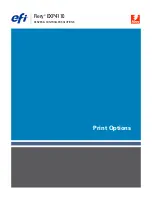
Getting started
3
Getting started Aastra 470
syd-0419/1.0 – R1.2 – 10.2011
Equipping the basic system
The Aastra 470 communication server ships with a plugged-in processor card (call
manager card CPU1) containing some interfaces and is ready to use as a basic sys-
tem. All other equipment is optional, so not every step in the following instruction
might be necessary for your configuration.
Before starting, read product information and safety instructions carefully
Hazard
Once the communication server is connected to the mains, there are haz-
ardous voltages inside the housing. Always observe the following points
before removing the housing cover:
– Disconnect the communication server from the power supply.
– Wait at least one minute so the charged capacitors have time to dis-
charge.
– Components can be damaged by electrostatic discharge when
touched. Always touch the earthed metal case of the communication
server before carrying out work inside the housing. This also applies to
interface cards, processor cards and system modules that are no
longer packed inside the ESD protective wrapping.
– Failure to observe the location requirements can cause the communi-
cation server to overheat, damaging electrical components and/or the
surrounding area. Be sure to observe the location requirements in
1. Insert the interface cards to the slots 3...8 from left to right and screw it up. Leave
slot 2 empty for a later expansion with an application card (CPU2).
2. If DSP or IP media modules are available, increase the DSP resources for later ex-
pansions. As to that, remove the call manager card CPU1 and follow the next
steps.
3. Mount the DSP modules on the call manager card. A maximum of two DSP mod-
ules can be stacked.
4. Mount an IP media module (either EIP1-8 or EIP1-32) to the call manager card
using the phillips screwdriver. IP media modules are not stackable.
5. Insert the call manager card back to slot 1 and screw it up.
CPU2
CPU1
1
1
1
2
3
4
5
6
7
8




























